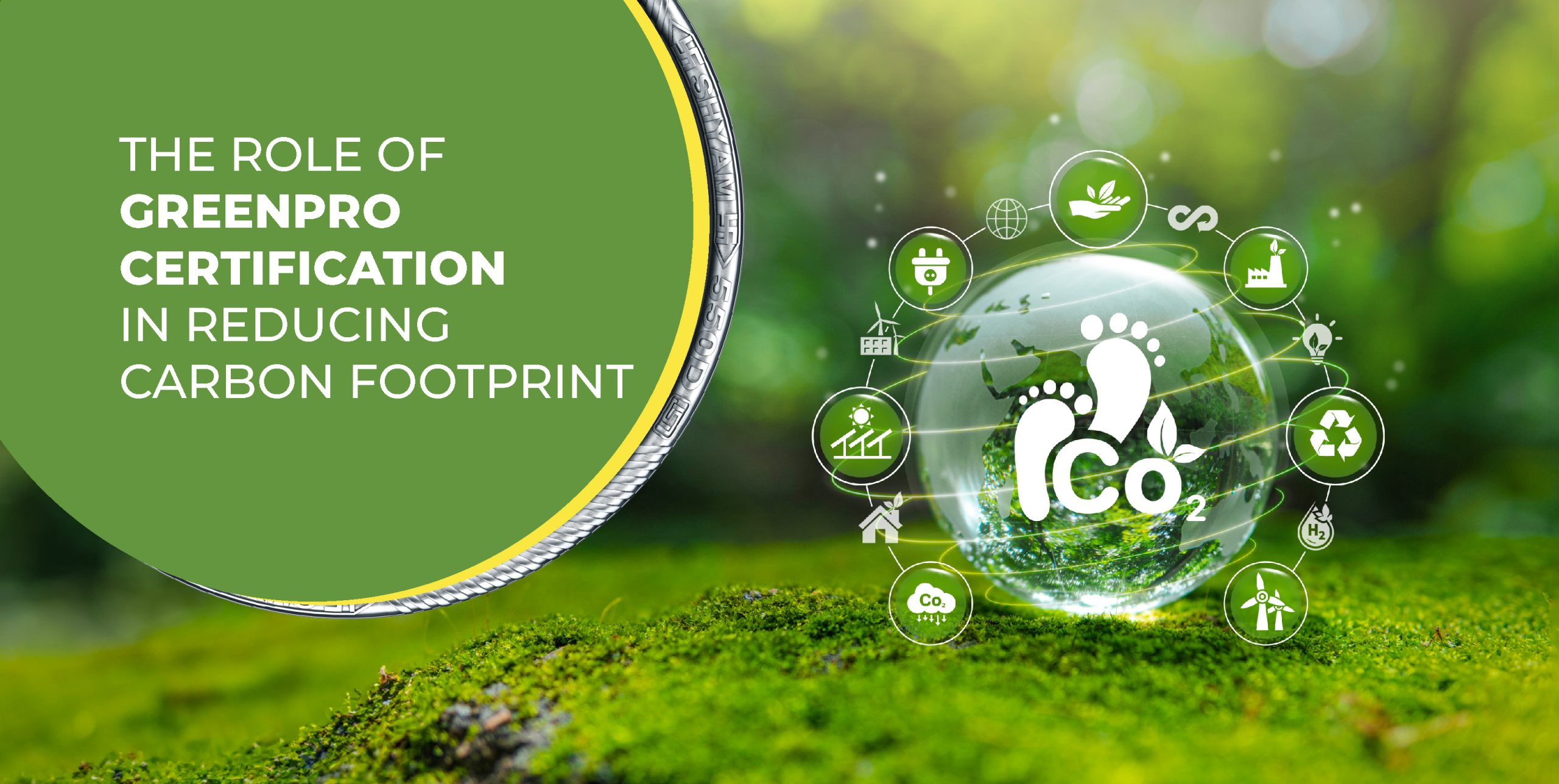The Role of GreenPro Certification in Reducing Carbon Footprint
In the past few years, the building industry has come a long way in implementing sustainable practices. The significant carbon footprint is one of the main challenges the industry faces today. The amount of hazardous carbon emissions increases considerably with the construction of additional structures and large construction labour forces.
As a result, many certification programs have been established. Its objectives are to encourage the adoption of environmentally friendly goods. And reduce carbon dioxide emissions. One such program is the GreenPro accreditation. It is well-known for its capacity to enforce stringent criteria for construction projects. It adheres to ethical norms. Hence lowering the carbon footprint of buildings and infrastructure.
What is the GreenPro Certification?
GreenPro Certification is a green product and material certification program launched by the Indian Green Building Council. The IGBC created this accreditation to promote sustainability and environmental responsibility in the building and construction sector. Product and material certification and evaluation are the primary objectives of GreenPro certification. It also looks at technology that contributes to a greener, more sustainable environment.
The accreditation is meant to assist developers, builders, and construction companies. They can select products adhering to strict guidelines. The products must be environmentally beneficial. Manufacturers and suppliers can show their commitment to sustainability. It can be done by meeting the requirements for GreenPro accreditation. It also reduces the building industry’s carbon footprint.
Reducing Carbon Footprint through Material Selection
One significant method that becoming GreenPro certified helps lower carbon footprint is by using green products. Traditional building materials that need a lot of energy to create. They emit a lot of carbon emissions. However, materials certified as GreenPro have undergone an assessment procedure. It considers the environmental impact of each stage of their lifecycle, from manufacture to disposal.
GreenPro encourages the usage of products that come from ethical sources. They are recyclable and have a reduced embodied energy. Among the products that can lessen the structures’ carbon footprint are recycled steel, fly ash bricks, and low volatile organic compound (VOC) paints. GreenPro assists builders in lessening the environmental effect of their projects by encouraging the use of such products.
Encouraging Energy Efficiency
A vital element of earning the GreenPro certification is energy efficiency. It is necessary to reduce emissions of carbon. Buildings soak up a large portion of the energy used globally. mostly for powering other equipment and for lighting, heating, and cooling reasons. By promoting certified energy-efficient appliances and equipment, GreenPro reduces the operating energy consumption of the buildings.
Energy-efficient windows, high-performance HVAC systems, and LED lighting are a few examples that can save energy. Both operating costs and carbon emissions are decreased by these solutions. Additionally, it makes them financially viable for both building owners and tenants.
Products that are GreenPro certified have to pass a rigorous review process in order to achieve the high efficiency standards. The accreditation contributes to the creation of energy-efficient buildings that lessen their impact on climate change by promoting the use of sustainable materials.
Indoor environmental Quality
GreenPro prioritises not only lowering carbon emissions but also raising indoor air quality. In addition to providing health benefits to building inhabitants, a healthy atmosphere also lowers the need for energy-intensive ventilation systems, which benefits sustainability.
Waste Management and Recycling
Reducing building projects’ carbon footprint requires effective waste management. Landfills leak methane into the atmosphere when they dispose of the majority of the trash produced by the construction sector. The adoption of waste management techniques that improve recycling by reducing building waste is encouraged by GreenPro accreditation.
Products with the GreenPro certificate are frequently composed of recyclable materials or have a long usable life ahead of them. As a result, there is a decrease in the need for virgin resources, energy consumption, and greenhouse gas emissions. In order to decrease the total impact of construction activities, GreenPro uses recyclable products and encourages waste reduction techniques.
Conclusion
In order to reduce carbon emissions and promote sustainability, the building sector relies heavily on the Green Pro certification. GreenPro assists developers and builders in producing more ecologically conscious and commercially sustainable buildings by promoting the use of eco-friendly and energy-efficient goods.
GreenPro certificates are becoming crucial for guiding the building and construction sector towards a low-carbon and sustainable future as the globe continuously works to adapt to environmental changes.

